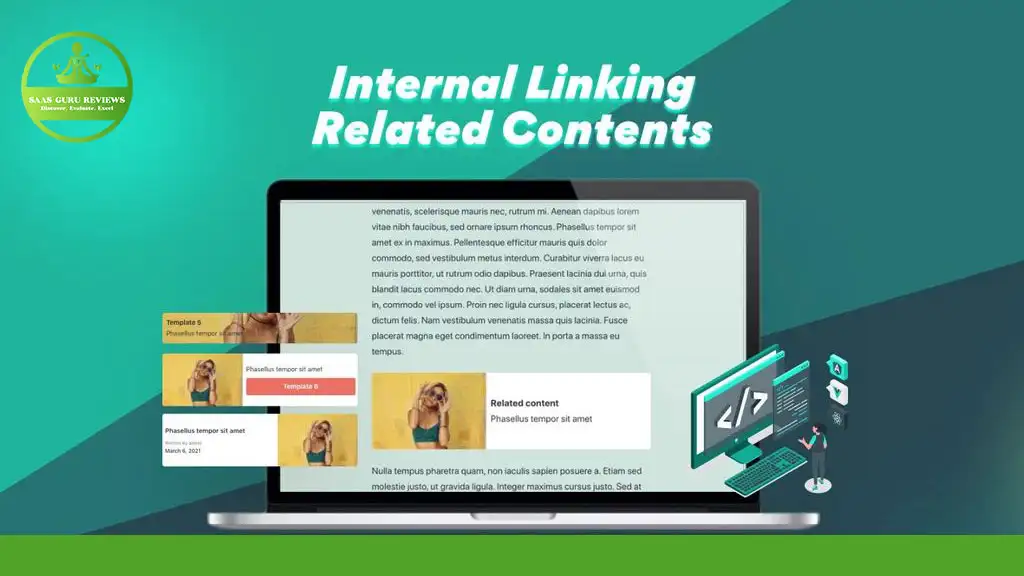Summary:
Internal linking is a crucial aspect of SEO that helps improve website navigation, distribute page authority, and enhance user experience. This article delves into the best practices for internal linking and explains why it’s essential for SEO. With insights from Alex_Themeinprogress, you’ll learn how to strategically use internal links to boost your website’s performance.
Understanding internal linking can significantly impact your website’s SEO and user experience. This article offers a comprehensive guide to internal linking, providing practical tips and strategies to optimize your website effectively.
Outline:
- What is an Internal Link?
- The Importance of Internal Linking for SEO
- Types of Internal Links
- Internal Linking Strategy: Best Practices
- How to Add Internal Links Effectively
- Common Mistakes in Internal Linking
- Tools for Internal Link Audits
- Internal Links vs. External Links
- How Internal Linking Can Boost Your SEO
- Conclusion and Key Takeaways
What is an Internal Link?
Internal links are hyperlinks that connect one page on your website to another page on the same site. These links are essential for SEO because they help search engines understand the structure and hierarchy of your site. They also guide visitors to related content, enhancing their overall experience.
How many stars / tacos does it have: 5
How many people reviewed it: 18
Information about the founder: Alex_Themeinprogress
The Importance of Internal Linking for SEO
Internal linking is important for SEO because it helps search engines index your site more effectively. When you include internal links, you allow search engines to discover new pages and understand the context of your content. This can lead to higher rankings in search engine results pages (SERPs).
Types of Internal Links
Understanding the types of internal links is crucial for a solid internal linking strategy. The main types include:
- Contextual Links: These are links within the body of your content that point to related articles or pages.
- Navigational Links: These links appear in menus, sidebars, and footers, helping users navigate your site.
- Footer Links: Links placed in the footer of your website, often used for less critical but still important pages.
Internal Linking Strategy: Best Practices
To create an effective internal linking strategy, follow these best practices:
- Use Descriptive Anchor Text: The anchor text should be relevant to the linked page’s content.
- Link to High-Value Pages: Prioritize linking to pages that you want to rank higher in search results.
- Avoid Overlinking: Too many internal links can dilute the value of each link.
How to Add Internal Links Effectively
Adding internal links effectively involves:
- Identifying Linking Opportunities: Look for pages that can naturally link to each other.
- Using Tools: Tools like Ahrefs and SEMrush can help identify linking opportunities.
- Regular Audits: Conduct regular audits to ensure all links are functional and relevant.
Common Mistakes in Internal Linking
Avoid these common mistakes to ensure your internal linking strategy is effective:
- Using Generic Anchor Text: Avoid using non-descriptive anchor text like “click here.”
- Broken Links: Regularly check for and fix broken links.
- Ignoring Link Equity: Ensure that your most important pages receive the most internal links.
Tools for Internal Link Audits
Several tools can help you perform internal link audits:
- Google Search Console: Provides insights into your site’s internal links.
- Ahrefs: Offers detailed reports on your internal linking structure.
- SEMrush: Helps identify broken links and linking opportunities.
Internal Links vs. External Links
While both internal and external links are important, they serve different purposes:
- Internal Links: Help with site navigation and distributing page authority.
- External Links: Provide additional value by linking to high-authority external sites.
How Internal Linking Can Boost Your SEO
Internal linking can significantly boost your SEO by:
- Improving Crawlability: Search engines can index your site more effectively.
- Enhancing User Experience: Users can easily find related content, increasing page views.
- Distributing Page Authority: Helps pass authority from high-ranking pages to new or lower-ranking pages.
Conclusion and Key Takeaways
- Use Descriptive Anchor Text: Ensure your anchor text is relevant to the linked content.
- Prioritize High-Value Pages: Focus on linking to pages that are important for your SEO strategy.
- Regular Audits: Conduct regular audits to maintain a healthy internal linking structure.
How many stars / tacos does it have: 5
How many people reviewed it: 18
Information about the founder: Alex_Themeinprogress
Bullet Point Summary:
- Internal links are hyperlinks that connect one page on your website to another.
- They are crucial for SEO and help improve site navigation and user experience.
- Types of internal links include contextual, navigational, and footer links.
- Best practices involve using descriptive anchor text and prioritizing high-value pages.
- Tools like Google Search Console, Ahrefs, and SEMrush can assist in link audits.
- Internal links help distribute page authority and improve crawlability.
- Regular audits are essential to maintain a strong internal linking structure.
By following these guidelines, you can create a powerful internal linking strategy that enhances your website’s SEO and user experience.



